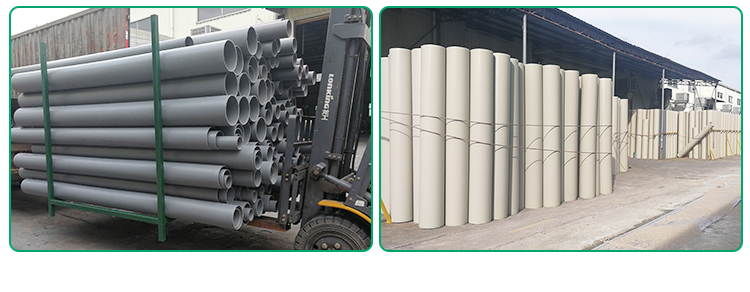Polypropylene duct can be classified in many ways. According to size, it can be divided into round and rectangular; classified by purpose, it is used for air-conditioning ventilation ducts, environmental protection system suction and exhaust ducts, purification system exhaust ducts, and industrial ventilation and supply ducts. Classified by process, coiled PP duct, and one-time forming PP duct. The above is the division of details.

It is a device developed for air circulation, which can reduce harmful gases in the air. The production requirements of laboratory ventilation PP ducts are very strict, and every process of laboratory ventilation ducts is strictly controlled. There are strict proofs. When the finished product is produced, entry into the factory is carried out in strict accordance with national regulations. Laboratory polypropylene duct has good overall structural performance, high sealing performance, and physical properties of acid and alkali resistance. Therefore, some factories use laboratory ventilation Polypropylene ducts as acid and alkali transport channels.
1. No corrosion: It can withstand the corrosion of high concentrations of acid and alkali in a wide temperature range, and the pH range is 1~14.
2. Wear-resistant and non-scaling: The inner wall of the PP duct and its accessories is flat and smooth, with low resistance flow and no scaling.
3. Reduce vibration and noise: It has excellent sound insulation performance and can significantly reduce vibration and noise caused by liquid flow.
4. Anti-freeze cracking: The material has excellent elasticity so that the cross-section of pipes and fittings can expand with the freezing liquid without bursting.
5. Anti-condensation, low heat loss: Its material is a poor heat conductor, which can reduce condensation and heat loss.
6. Simple installation: PP air duct is light in weight, easy to install and operate, and can be welded.
7. Long service life: Under the specified conditions of use, the service life of the pipeline system is 50 years.
The colors of polypropylene ducts are generally white and gray, and there are other colors besides customization. Its diameter is between 75 ~ and 1600 mm, and buyers can buy it according to their needs. If its diameter does not exceed 800 mm, it can be molded at one time, which is very convenient. The laboratory ventilation polypropylene duct is made of polypropylene, which has higher performance than polyethylene, and higher heat resistance, acid resistance, alkali resistance, and high-pressure resistance than polyethylene. Laboratory ventilation PP duct is a new type of resin material after nylon, with excellent comprehensive performance.

In our lives, most of the laboratory polypropylene PP ducts are used to transport air. They are the exchange ducts between indoors and outdoors. It is not easy to be aging and corroded, and the quality has a high guarantee. The key is easy installation and connection, and the overall appearance is beautiful.
Problems encountered in production and solutions
Polypropylene duct is relatively rough. Adjust the process temperature and reduce the cooling water temperature. The best cooling water temperature for PE pipe is 20 ~ 25℃. Check whether the waterway is blocked or the water pressure is insufficient. Check whether the heating ring of the barrel, die, etc. is damaged, adjust the water flow of the sizing sleeve, check the performance and batch number of the raw materials, and check the core temperature of the mold. If it is higher than the temperature of the mold section, reduce the core temperature and clean the aggregate of the mold.
Adjust the water outlet pressure of the sizing sleeve, and the water output must be balanced. Adjust the nozzle angle in the vacuum setting box to cool the pipe uniformly. Check the mold, sizing sleeve, cutting machine, and other hardware for debris and burrs.
Check whether water enters the inner tube. If it is flooded, pinch the tube blank of the rigid mold to seal its cavity, reduce the internal temperature of the mold, and clean and polish the mold.
Adjust the sizing sleeve to make it even, and adjust the vacuum of the second chamber to make the vacuum of the back chamber slightly higher than that of the front chamber. Check whether the vacuum seal is too tight, check whether the tractor is shaking, and check whether the output of the main engine is uniform.
Check whether the water inlet of the vacuum pump is blocked, and unblock it when it is blocked. Check whether the vacuum pump is working properly, check whether the vacuum pipeline is leaking, and check whether the small hole in the middle of the pressure core screw is blocked. If it is clogged, clean it with a thin wire.